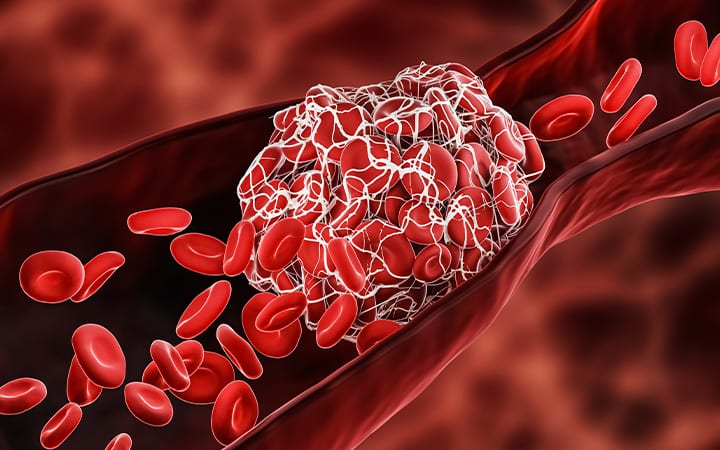Preventing Deep Vein Thrombosis from Coming Back
January 10, 2024

Deep vein thrombosis, or DVT, is a common condition caused by a blood clot in a deep vein, blocking or slowing blood circulation in the body. DVT is a serious condition that thankfully has many effective therapies. However, if you have been diagnosed and treated for DVT, you may be at an increased risk for another blood clot.
That’s why it is important to know your risk factors, and stay up-to-date on strategies that can help prevent DVT from recurring, says University Hospitals Director of Vascular Medicine Teresa Carman, MD.
DVT Causes and Risk Factors
DVT can occur at any age but is most common in adults over the age of 70. It can develop in any deep vein of the body but is most frequently located in the lower legs, thighs or pelvis. The danger with DVT is if part of the clot breaks off and travels to the lungs. This is called a pulmonary embolism, which can be life-threatening. Together, DVT and pulmonary embolism are the third-leading cause of cardiovascular death after heart attack and stroke.
There are a number of risk factors and causes of DVT. These include:
- Genetic risk for clotting
- Periods of immobility, such as long flights or bed rest while recovering from an illness or surgery
- Vessel injury or trauma, including the use of a catheter or pacemaker
- Hormone therapy or use of hormone contraceptives
- Pregnancy
- Smoking
- Obesity
- Cancer
- Immune disorders
- Inflammation
How to Prevent DVT from Returning
According to Dr. Carman, the risk for DVT recurrence is quite common. Patients treated for DVT overall have a 40 percent chance of it coming back within 10 years. If the original DVT was caused by a temporary risk factor such as surgery or trauma, it is less likely to recur. But idiopathic DVT (when the cause is unknown) has up to a 50 percent chance of returning. Your doctor should review all your risk factor for recurrence when recommending a treatment plan.
Prevention is key. There are a number of strategies that can help reduce your risk of blood clots and DVT recurrence. These include:
Medications: Blood thinners, or anticoagulant medications, may be prescribed by your doctor on either a short- or long-term basis, depending on your risk factors. These are helpful in preventing recurrence as long as you have a low to moderate risk for bleeding, says Dr. Carman. It’s important to have regular visits with your provider while on these medications to monitor and adjust if needed.
Compression stockings: Your provider may also recommend the use of compression stockings to reduce your risk of DVT recurrence. Some data suggests it can be especially helpful in preventing travel-related DVT. Dr. Carman says usually a 20 – 30 millimeters of mercury (mmHG) stocking is recommended, which is prescription-grade compression. If the patient can’t tolerate this level of compression, a 15 – 20 mmHG stocking may be advised instead.
Stay active: Getting physically fit, keeping active and have a weight in the normal range may help reduce your risk. Make sure to talk to your doctor before attempting a new exercise or weight-loss routine.
Quit smoking: Tobacco use is a risk factor for DVT and can also amplify other risk factors such as obesity. Quitting smoking not only reduces your DVT risk, but is also great for your health overall and has numerous other benefits.
Travel strategies: On long flights, make sure to stay hydrated, do foot and ankle mobility exercises and periodically get up and walk. You can wear compression stocking on a flight to help reduce your risk as well.
“Given the high likelihood of recurrence, avoiding known DVT triggers is important,” says. Dr. Carman. “This can reduce your overall risk and help avoid complications associated with blood clots and DVT.”
Related Links
University Hospitals Harrington Heart & Vascular Institute provides diagnosis and treatment for patients with any condition that affects the body’s blood vessels, including deep vein thrombosis. With multiple locations across northern Ohio, our providers offer a complete range of services, from routine examinations and medical treatments to the most advanced surgical interventions and post-treatment follow-up care.


